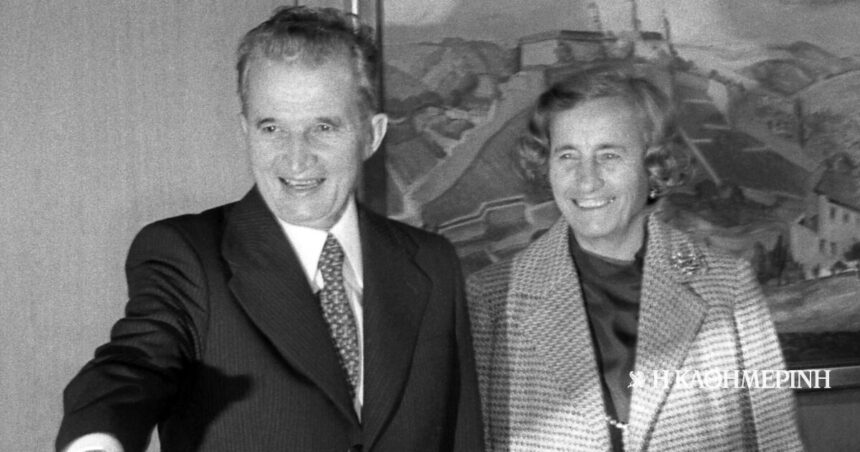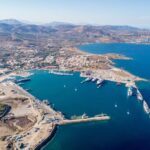Although in the 1950s Romania he was her loyal partner Soviet Unionat the beginning of the next decade Soviet-Romanian relations cooled for reasons mainly related to the refusal of the Romanians to accept Nikita Khrushchev’s economic program for the socialist countries. Bucharest did not go along with Moscow on the Cuban Missile Crisis, assuring the Americans that it would abide neutral stance in the event of an American-Soviet war. Gradually, the traditional anti-Russian syndrome of Romanians turned into a controlled anti-Soviet one, which exuded a moderate “nationalism”. For its part, Moscow tolerated Romania’s “national communism” as long as its own interests were not directly affected.
The same autonomous policy of Romania was followed by Nicolae Ceausescusuccessor to Gheorghe Gheorghiu-Dez after his death in March 1965. Born in 1918 into a large peasant family, Ceausescu joined the C.K. Romania as a teenager and was imprisoned for his action. In prison he met Dez, whose trust he gained over the years. He became a member of the Central Committee in 1952 and the Politburo in 1955. Having the favor of the old leadership, in 1965 he was elected general secretary of the party. Although he did not have a significant education, Ceausescu he was distinguished for his wit and the readiness of his speechhaving self-discipline and no sense of humor. Initially, he projected the profile of a liberal communist leader, offering the citizens of his country relative intellectual and artistic freedom. This did not mean, however, that he tolerated criticism of his regime.
Ceausescu built a “socialism with capitalist money” and Western technology.
In his foreign policy, he followed the tactic of rapprochement with Western countries. In the early 1970s brokered a bridging gap in US-China relationsreceiving a generous reward for his actions: in 1972 Romania became a member of the World Trade Organization and the IMF. However, he did not appear before the UN in favor of Soviet withdrawal from the Afghanistan and remained a member of the Warsaw Pact, the defense alliance of socialist states. In short, build one socialism with capitalist money (loans from Western countries for the development of industry) and Western technology, without offending vital interests of the Soviet Union.
At home, he imposed a regime of Stalinist-style personal worship. In 1974 he declared himself president of the Socialist Republic of Romania. Wanting to lend an imperial grandeur to Bucharest, in the 1980s did not hesitate to destroy much of the historic city center in order to build the “Palace of the People” and the imposing “Avenue of Socialism”. Ceausescu’s imperial megalomania was, of course, accompanied by the vanity of his wife Elena.
The energy crisis of the 1970s did not leave Romania unaffected. Production and exports decreased and the country’s external debt rose to unimaginable levels. In 1982, the IMF imposed strict debt repayment conditions on Romania. Ceausescu then took initiatives to repay it in a short time, resorting to unprecedented austerity measurescausing social reactions. What angered a portion of the Romanian people was the wastefulness of Ceausescu and the leadership team around him. The regime’s popularity slipped further due to the actions of the notorious “Securitate”, the state security agency. Although he announced in a festive atmosphere in April 1989 that the Romanian debt was paid off and Romanians could hope for a better future, his credibility was irreparably shaken.
The protests escalated and the regime’s response was violence.
The world-historical changes taking place in Eastern Europe in the fall of 1989 also affected Romania. Protests against the regime escalated in December, and the regime’s response was violence. On December 21, Ceausescu organized a massive rally in the center of Bucharest, in Palace Square (now Revolution Square), to condemn the “terrorist groups” who were reacting to the regime and to promise to improve the living conditions of the population. His speech, which was broadcast live by a television network (excerpts of it are available online), was interrupted when the angry crowd openly expressed their outrage at the regime. Although state security defended Ceausescu, the army sided with the rebels, causing the regime to collapse like a paper tower.
Ceausescu and Elena were arrested on December 22, 1989. An emergency military court was immediately set up, which imposed the death penalty on the Ceausescu couple. Their execution took place on December 25 in a camp in Tirgoviste.
Column editor: Myrto Katsigera, Vassilis Minakakis, Antigoni-Despina Poimenidou, Athanasios Syroplakis




